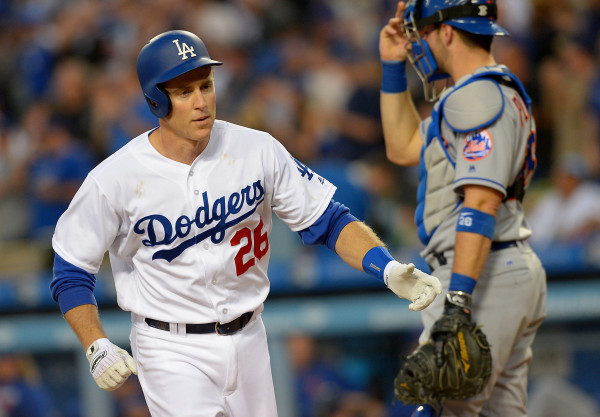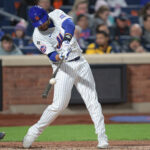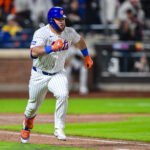
The departure of the Brooklyn Dodgers was a contributing factor towards the birth of the Mets (and the blue in their uniforms). But the connections don’t end there. Gil Hodges, whose number will be retired by the Dodgers this weekend, played in Brooklyn and Los Angeles before finishing his playing career with the Mets and later performing miracles as manager. Steve Cohen even put in a bid to purchase the Dodgers in 2012.
New York’s current National League team has been met with some resistance when it came to dealings against one of the National League’s history-rich franchises, especially in October.
June 30, 1962
The expansion Mets’ National League-worst offense was ripe to be dominated, and the emerging Sandy Koufax did just that. Tossing the first of his four no-hitters and the first no-no in the history of the Los Angeles Dodgers, Koufax struck out 13 and walked five in a 5-0 victory at Dodger Stadium.
It would be the first of four consecutive seasons in which Koufax would pitch a no-hitter. The other no-hit victims were the 1963 Giants, the 1964 Phillies, and the 1965 Cubs.
Mets third-base coach Solly Hemus, in an attempt to psych out Koufax, yelled: “It isn’t really that easy, is it?” Koufax could be heard responding, “No, it surely isn’t,” even if his actions showed otherwise.
June 4, 1969
Manager Gil Hodges, unafraid to offer an honest evaluation of his team, said the Mets (when finishing with a winning record was a pipe dream), could not be considered contenders until they reached .500. They did so, for the first time in team history, on May 21. Then gave it back by dropping five in a row.
But in early June, in the midst of a franchise-long winning streak, Jerry Koosman and Tom Seaver—posting back-to-back gems—confirmed that losing records were a thing of the past.
Then Jack DiLauro followed those standout starts with an even better one. The left-handed Triple-A call-up christened his big-league career by baffling Los Angeles for nine innings—shutting them out on two hits and two walks. DiLauro did everything but get the win. It took a Willie Davis error, made on a Wayne Garrett single, to break a fifteen-inning stalemate.
1988 NLCS
The Mets had beaten LA in ten of 11 regular-season meetings. There was no reason why this trend shouldn’t have continued in the playoffs—except for Orel Hershiser.
That year’s Cy Young Award winner was coming off a 59-inning scoreless streak and his fingerprints were on four of the seven games—two of which the Mets found a way to win with late rallies.
Gary Carter‘s two-out ninth-inning hit against reliever Jay Howell was the decider in the series opener. New York used ingenuity (namely finding Howell to have pine tar in his glove) and eighth-inning offense to take Game 3.
Game 4 was a near lock with Dwight Gooden cruising and the Mets holding a 4-2 lead in the ninth. Then came Mike Scioscia with no outs and a runner on. Doc’s first pitch to the contact-hitting catcher (with three homers on the year) was down the middle. Scioscia sent it into the right-field bullpen. Arguably the most devastating moment to the Mets’ hopes for a late 80’s dynasty, it tied the contest and sent it to extras—which LA won in 12 and was saved by Hershiser.
Orel came back three nights later stunningly knock the Mets out of the postseason with a 6-0 shutout in Game 7. For eleven years, they never returned.
May 7, 1991
Darryl Strawberry‘s Mets career was filled with drama. The dramatics didn’t end when he left, either. His first game in New York since signing a five-year, $20.25 million contract to play in his hometown had all the expected hype. Each at-bat prompted strong reactions from the 47,700-plus in attendance, several of whom gave the “Darr-yl, Darr-yl” chant that became famous in Boston during the 1986 World Series.
Los Angeles was being shut out by Frank Viola when Strawberry added to his record number of Shea Stadium home runs. Darryl sent one over the left-center field fence for a two-run sixth-inning blast. He had a chance to complete an LA comeback in the ninth, but grounded out against John Franco with two down and the tying run at third base.
2006 NLDS
The best Mets season since ’88 also began with a postseason encounter versus Los Angeles. This one went far better. New York swept aside the Dodgers despite losing two veteran starting pitchers just prior to the series. Injuries to Pedro Martinez and Orlando Hernandez necessitated young John Maine to start the opener at Shea.
With the help of a crazy baserunning gaffe, the Mets got two outs on one throw home to catcher Paul Lo Duca.
Carlos Delgado went 4-for-5 with a home run and a key seventh-inning hit that keyed a 6-5 win. Tom Glavine pitched brilliantly in Game 2 and a late comeback at Dodger Stadium ensured that the series would go the minimum.
2015 NLDS
If ’88 had drama and anguish while ’06 had a positive end result, consider 2015 a mixture of both. Arguably the biggest win on the Mets’ road to the World Series came in the winner-take-call contest on the West Coast.
Perhaps the most impressive performance in the career of Jacob deGrom came in the deciding contest at Dodger Stadium. Clearly without his best stuff, deGrom battled through six innings and kept his team in the game long enough for Daniel Murphy to win it. “Murph-tober” was in full effect when he went deep to break a 2-2 tie and the bullpen held it from there.
What preceded it was Chase Utley‘s non-slide which took down Rueben Tejada as well as Yoenis Céspedes helping to christen the first postseason game at Citi Field in a 13-6 blowout in Game 3 with a monstrous home run.
May 27, 2016
On a Memorial Day weekend series that included a 1986 reunion and the attempted Chase Utley retaliation, the Mets got the better of the Dodgers after it appeared the New York bullpen was way too generous in giving it away.
Sporting the racing stripe unis from the last World Series champion, the Mets jumped out with three first inning runs and had a 5-1 lead into the ninth. Utley added to his villain legacy with a tying three-run double (part of a four-run inning), but the good guy prevailed. Curtis Granderson led off the bottom half with a homer that snuck beyond the right-field wall.















